Tucson is Arizona’s cultural hub with top museums, gardens and more. From a National Park to a Zoo and an Aviation museum, there are lots to do in this Southern Arizona town. Visitors can explore its parks, a nearby cave and a historic mission during their trip as well. Here are the top Fun Things to Do in Tuscon Arizona.
Top 19 Fun Things to Do in Tuscon Arizona
Saguaro National Park
Arizona-Sonora Desert Museum
Mount Lemmon Scenic Byway
Tucson Mountain Park
Sabino Canyon Recreation Area
Mission San Xavier del Bac
Pima Air & Space Museum
Titan Missile Museum
Catalina State Park
Reid Park Zoo
The Mini Time Machine Museum of Miniatures
Colossal Cave Mountain Park
Tucson Botanical Gardens
Tohono Chul
Tucson Presidio District
Tucson Museum of Art & Historic Block
Arizona State Museum
Children’s Museum of Tucson
Gaslight Theatre
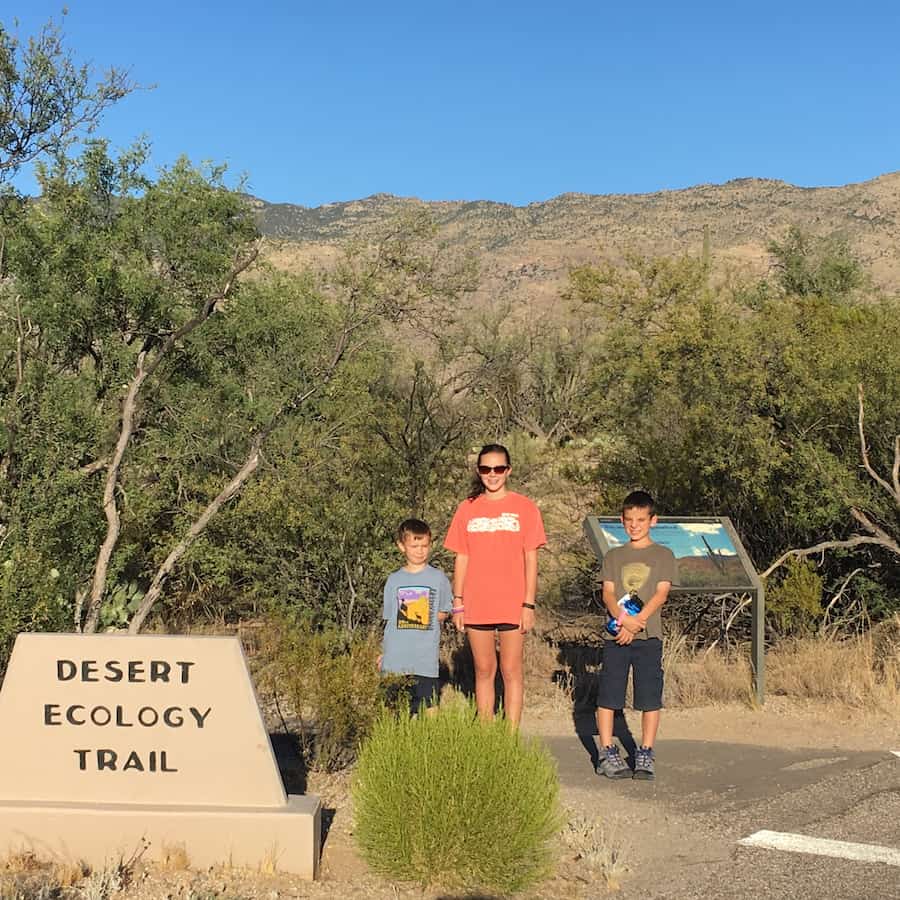
Saguaro National Park
As the only national park dedicated to one species of cactus, seeing the famed Saguaro cactus is on many people’s to-do lists. It was for me before my first visit. The Saguaro Cactus, made famous by Wile E. Coyote and Roadrunner cartoons, is an icon of the desert southwest.
With two sides of Saguaro National Park separated by the majority of Tucson (and its traffic), first time visitors need to decide what they want to see, especially if limited on time. For visitors with more time, each side of the park offers different landscapes to explore, and visitors will find a visitor center, lots of hiking along
For saguaro viewing, head to the east side of the park (Rincon Mountains District). Drive along the Cactus Forest Loop Drive, then get out and walk the Desert Loop Ecology Trail. It offers a high concentration of the famed saguaro cactus, and you might even see a roadrunner.
To enjoy desert mountain scenery and petroglyphs, the west side of the park (Tucson Mountain District) is your destination. After stopping in the visitor center, take the Desert Discovery Trail. Then head to Signal Hill for the petroglyphs. Both trails are short.
The Rincon Mountain District is about 21 miles east of downtown. The Tucson Mountain District is about 15 miles west of downtown. To travel from one side of the park to the other will take about an hour, depending on traffic and they are about 30 miles apart.
Saguaro National Park is open 365 days a year and 24 hours a day. Use an America the Beautiful annual pass ($80) or purchase a 7-day pass for $25 per vehicle.
Top 9 Fun Things to do in Saguaro National Park
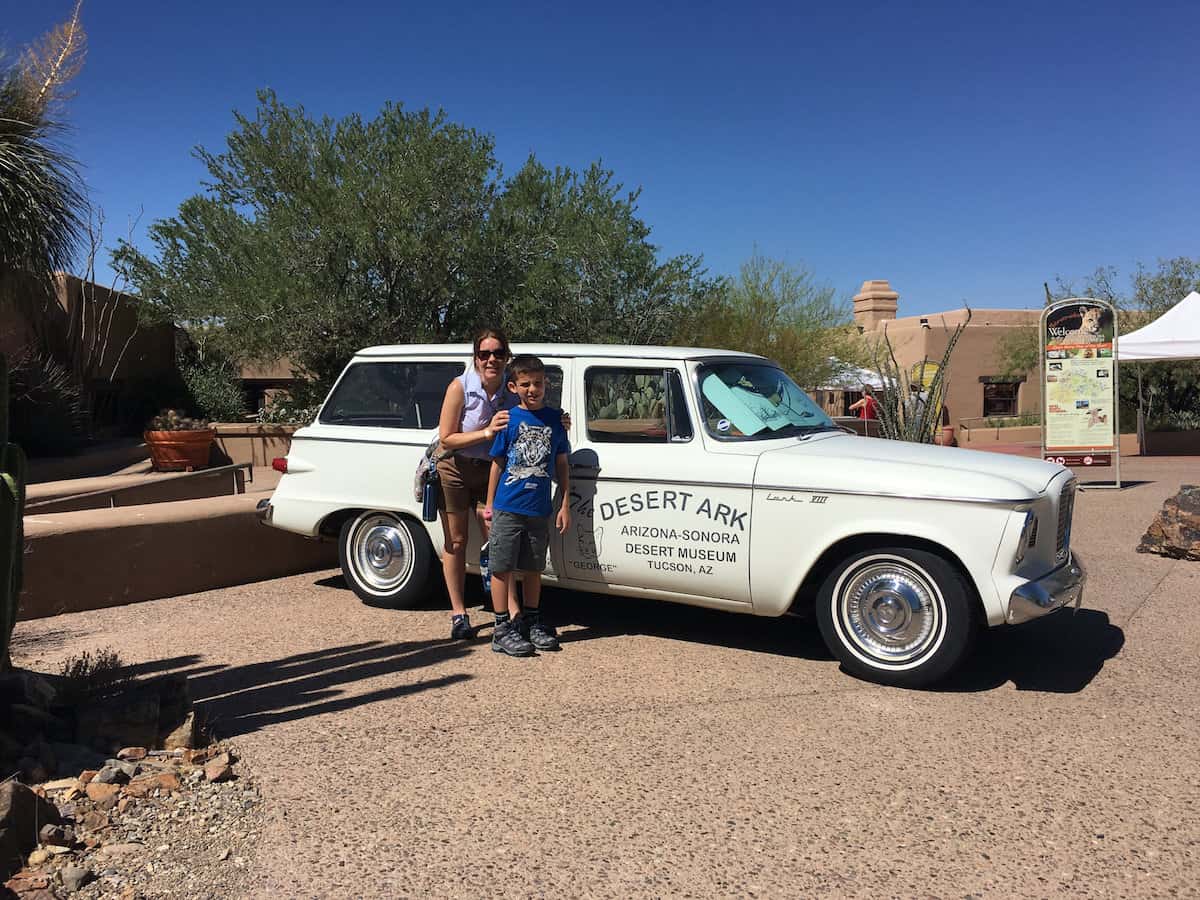
Arizona-Sonora Desert Museum
The name is a bit confusing; the Arizona-Sonora Desert Museum combines a zoo, a botanical garden, and an aquarium with an art gallery. With 98 acres, it’s home to 230 desert animal species, including a hummingbird aviary along with mountain lions and coyotes, among others. Visitors will find a string ray touch tank along with the Warren Aquarium.
The Arizona-Sonora Desert Museum features 1,200 local plant species to discover around its outdoor spaces. Though about 85 percent of what you’ll experience is outdoors and requires walking, it’s best to explore early in the day.
Located at 2021 N. Kinney Rd., about 13 miles west of central Tucson and within the Tucson Mountain Park. It is open every day. Generally, the museum is open from 8:30 a.m. to 5 p.m. from October until May and from 7:30 a.m. to 2 p.m. during the summer. Entry costs $29.95 for adults ages 13 to 64, $19.95 for kids ages 3 to 12 and is free for children 2 and younger.
Tucson Mountain Park
On the west side of Tucson, the Tucson Mountain Park adjoins the Saguaro National Park’s Tucson Mountains. With 62 miles of multi-use trails, it’s one of the largest protected areas managed by a city.
The Gilbert Ray Campground offers 130 RV sites (with hook-ups) along with five tent-only sites and rates start at $10 a night for tents and $20 for RV sites. This is a better place to camp than Saguaro National Park. The Tucson Mountain Park also features three picnic areas.
Located at 8451 W. McCain Loop, at about 8 miles west of downtown Tucson. Open from dawn to dusk and free to enter.
Top Things to Do at Grand Canyon’s South Rim
Mount Lemmon Scenic Byway
Enjoy one of the most scenic drives in southeast Arizona; as a bonus, it’s cooler the higher you go, thanks to an elevation change. Also known as the Catalina Highway Scenic Drive, it’s a 60-mile round-trip byway that offers visitors the biological equivalent of driving from the deserts of Mexico to the forests of Canada (the road begins in the lower Sonoran vegetative life zone and ascends to the high forests in the Canadian zone).
Find lots of hiking along the route, as you pass through the Coronado National Forest. For those who enjoy camping, consider the Spencer Canyon Campground. At U.S/ National Forest trailheads, expect to pay $10 per vehicle to park.
Note: the road to Mt. Lemmon Ski Valley is drivable year-round, but winter weather may cause restrictions.
Located about 45 miles northeast of downtown Tucson, take the Tanque Verde Road east from Tucson to the Catalina Highway.
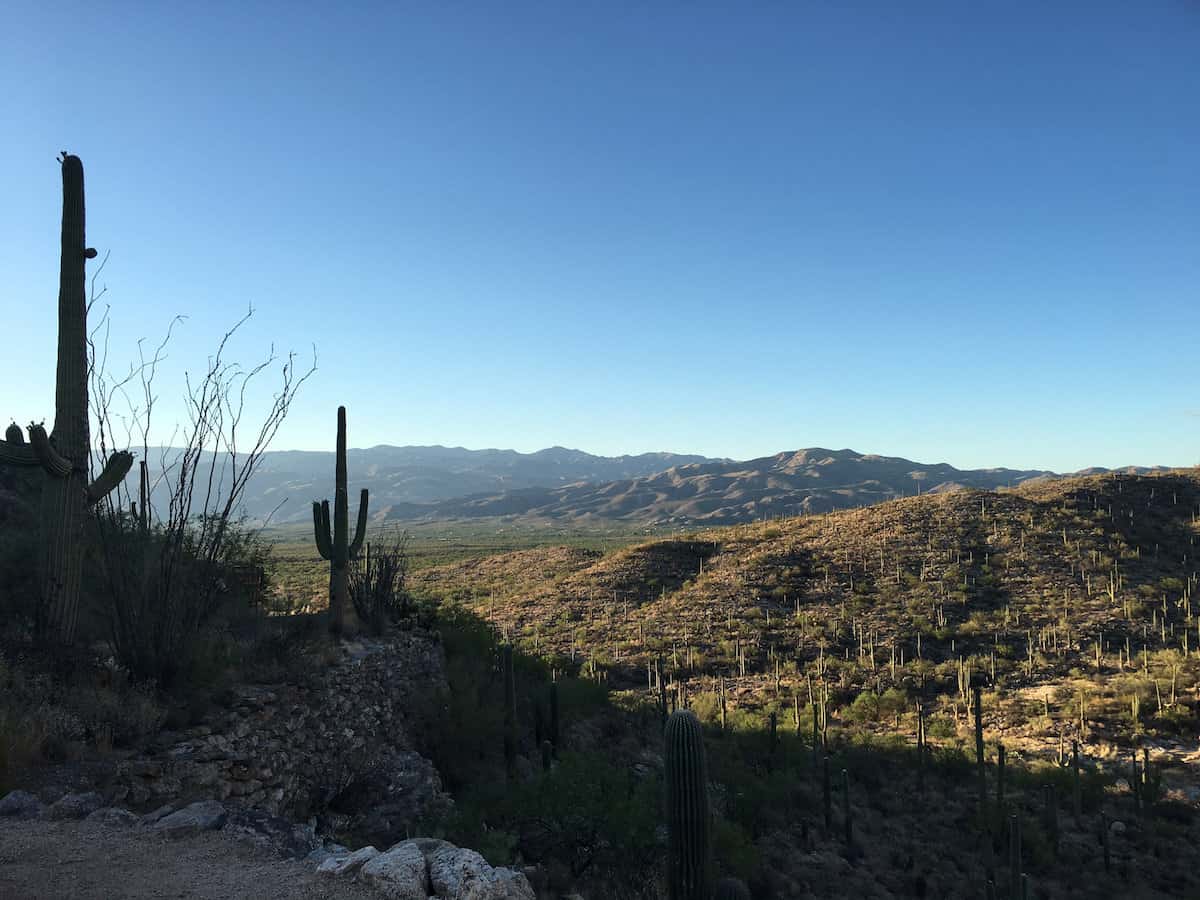
Sabino Canyon Recreation Area
Part of the Coronado National Forest, visitors can explore the Santa Catalina Mountains on any of Sabino Canyon’s 30 miles of hiking trails. At the base of the mountains, wildlife viewing is another top thing to do Tucson and Sabino Canyon Recreation Area is home to numerous animals, including the Gila monster.
For those who don’t want to hike, the Sabino Canyon Crawler is a narrated 1-hour open-air shuttle through the canyon (closed to private vehicles) with nine shuttle stops. Departing from the Sabino Canyon Visitor Center, the Bear Canyon route is 30 minutes long and stops at three locations.
Located at 5700 N. Sabino Canyon Rd., about 14 miles northeast of downtown Tucson. The visitor center is open daily from 8 a.m. to 4:30 p.m. and the canyon remains open 24 hours a day/365 a day.
The day-use fee is $8 per vehicle. Canyon Shuttle rides cost $15 for adults and $8 for children between the ages of 3 and 12. For the Bear Canyon Shuttle, adults are $8 and kids (3 to 12) are $5 and those younger than 3 are free.
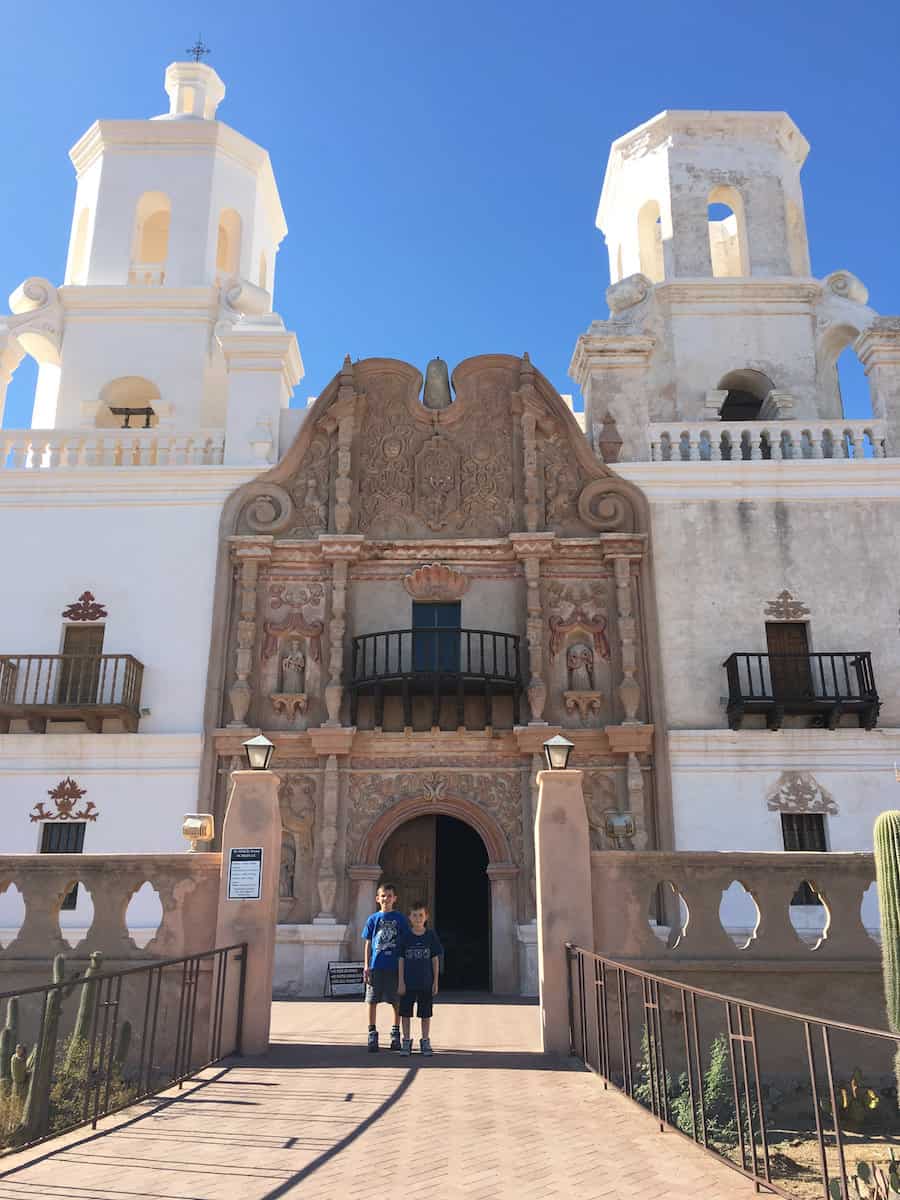
Mission San Xavier del Bac
South of Tucson on the Todd O’odham Reservation the White Dove of the Desert is an active Roman Catholic Church. Completed in 1797, the church features Moorish, Byzantine, Renaissance and Mexican architectural styles and a National Historic Landmark.
Mission San Xavier del Bac is the oldest European-built structure in Arizona and features murals and statuary inside the mission. Constructed of low-fire clay brick and stone along with lime mortar.
Located at 1950 W. San Xavier Rd., about 10 miles south of downtown Tucson. Open every day from 9 a.m. to 4 p.m. Free to enter though donations are accepted.
Pima Air & Space Museum
For aviation fans, Pima Air and Space Museum is a bucket list collection of aircraft and one of the largest air and space museums in the world. With over 80 acres to explore including several air-conditioned buildings, visitors can see 400 aircraft and spacecraft during their visit.
Icons like the Wright 1903 Flyer are on display. along with the popular Lockheed SR-71A Blackbird. The F-14 Tomcat is another head-turner. Save some steps and explore the outdoor facilities by a guided, 45-minute tram ride to see 150 of the aircraft.
Located at 6000 E. Valencia Rd. near the Davis-Monthan Air Force Base, the Pima Air & Space Museum is about 10 miles southeast of downtown Tucson. Open from October to May from 9 a.m. to 5 p.m. (last entry at 3 p.m.). and during the summer, from 9 a.m. to 3 p.m. (last entry at 1:30 p.m.).
Adult admission (13 and older) is $19.50 for adults, $13 for youths ages 5 to 12 and is free for children 4 and younger. Save some money and buy two-day tickets. The tram is $8.
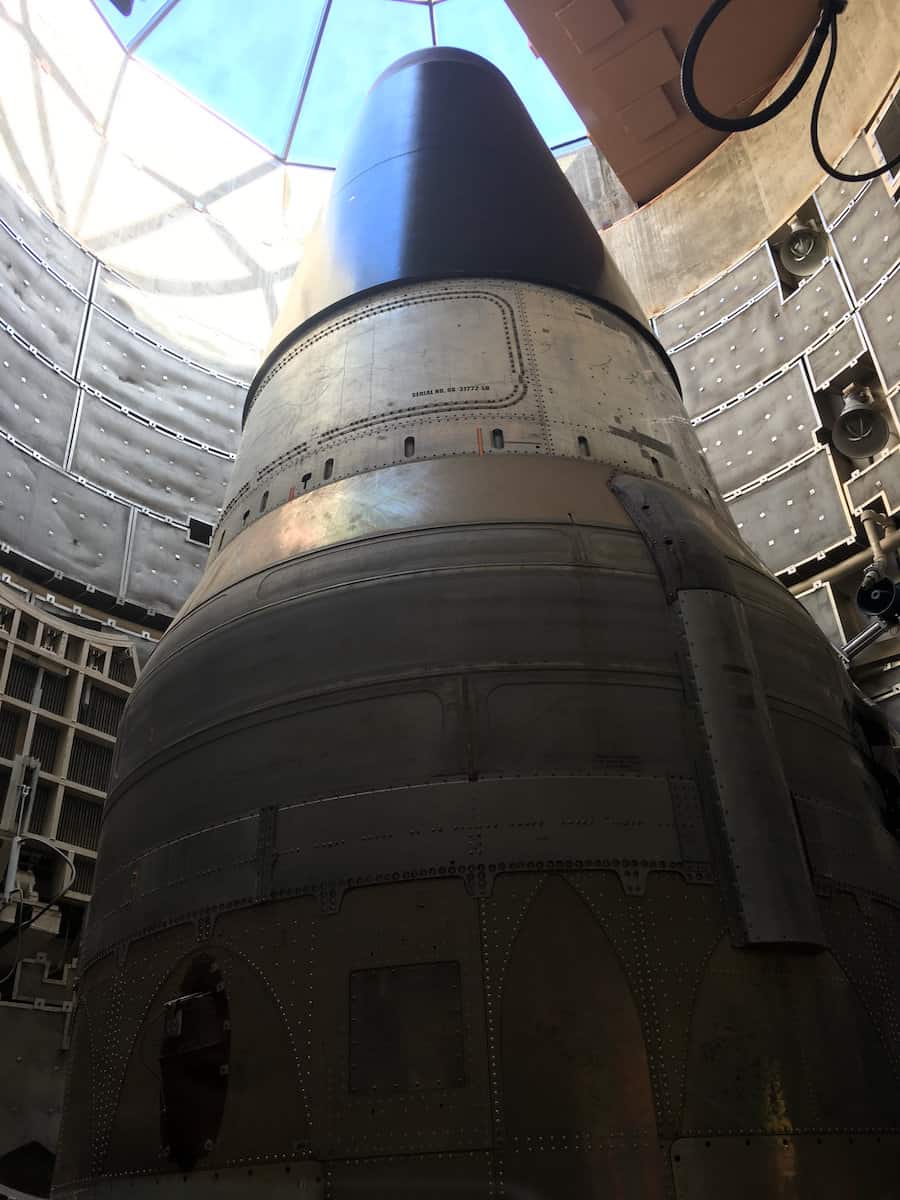
Titan Missile Museum
In one of the eeriest tours in the U.S., visitors can go underground and explore a decommissioned ICBM (intercontinental ballistic missile) site. The Air Force Facility Missile Site 8 was constructed in 1963 and decommissioned in 1984.
Home to Titan II Missiles, the underground complex was one of 54 sites across the U.S. on stay-by from 1963 to 1987. A guided 45-minute underground tour explains life in the missile silo in the Cold War.
After climbing down the stairs, visitors walk through a blast lock area and go to the three-level control area with a living level along with a launch control level with a bank of computers. Down a long circular tube called the cableway, visitors can see the actual decommissioned Titan II mission. With eight levels, the massive missile is a sight.
According to my kids, they said it was one of the scariest things they have witnessed. I (who remembered the Cold War) thought the site was interesting.
Located at 1580 Duval Mine Rd. in Green Valley. Open daily from October to May from 9:45 a.m. to 5 p.m. and during the summer from Thursday to Sunday from 9:45 a.m. to 5 p.m. The first tour is at 10 a.m., and the last tour is at 4 p.m. Adult admission (13 and older) is $16.50, and kids (5 to 12) are $12.00, and those under 5 are $1. Reservations for tours are strongly recommended.
Where to See Minutemen Missiles
Catalina State Park
Get some spectacular views of Tucson from Catalina State Park, at the base of the Santa Catalina Mountains. With 5,500 acres of canyons, streams, hiking and biking trails, visitors can wind through the Coronado National Forest at elevations near 3,000 feet.
The park is home to over 5,000 saguaro cacti along with native desert plants. Additionally, it has been designated an Important birding area by the Audubon Society, with about 150 species that call the park home.
Catalina State Park offers a visitor center with a park store. The park offers 120 campsites with electricity and water, a bathhouse and a dump station. Camping starts at $25 a night. Reservations recommended.
Located at 11570 Oracle Rd. Enter for $7 a day per vehicle. Open daily from 5 a.m. to 10 p.m.
Reid Park Zoo
As the home to 250 different species, find a bit of everything from elephants and jaguars to flamingos and rhinos. For kids, there’s a zoo train, a wet play area, a carousel, along with daily demonstrations with zoo keepers.
Located at 3400 E. Zoo Ct., about 6 miles southeast of downtown Tucson. The Reid Park Zoo is open October to May from 9 a.m. to 4 p.m. and June to September from 8 a.m. to 2 p.m. Adult admission (15 to 61) is $10.50, $6.50 for kids to 2 and 14 and babies are free. Parking is free.
The Mini Time Machine Museum of Miniatures
With 10,000 square feet, see 500 miniature houses and room boxes in a treasure trove of tiny worlds. From bookstores with individually made books to opulent homes dripping in crystal and silver, find a miniature for everyone. There are even antique dollhouses dating from the 1740s.
Located at 4455 E. Camp Lowell Dr., about 5 miles east of downtown Tucson. Museum hours are Tuesday to Sunday from 9 a.m. to 4 p.m. Adult admission (18+) is $14, students with ID $12, and kids (4 to 17) cost $8, and those 3 and younger enter for free.
Colossal Cave Mountain Park
If visiting Tucson in the summer, a cave tour is a cool, active activity that can be enjoyed in the afternoon. The cave is under a 2,400-acre area that can be explored by hiking or biking, and it’s brimming with wildlife. Additionally, there’s horseback riding and camping at Colossal Cave Mountain Park.
Discovered in 1879 by Solomon Lick, Colossal Cave is on the National Register of Historic Places. The cave tour takes 40 minutes and covers half a mile as it goes down 363 steps.
Located at 16721 E. Old Spanish Trail in Vail, about 22 miles southeast of Tucson. Open daily from 8 a.m. to 4 p.m. daily. Cave tours are offered from 10 a.m. to 3 p.m. The Classic Cave Tour is offered hourly and costs $24 for adults, $14 for kids ages 5 to 12 (no one under 5 allowed on a cave tour). Reservations are available.
Top Destinations In California for Families

Tucson Botanical Gardens
This 5.5-acre property features 17 gardens that mirror the size of residential yards infusing native plants used by the Tohono O-odham people with popular roses and herbs. In addition to outdoor garden displays, visitors can explore the Cox Butterfly and Orchid Pavilion (open seasonally from October to May).
Edna’s Eatery is located on the property and focuses on seasonal ingredients and Southwest flavors. The Tucson Botanical Gardens hosts events year-round including the holiday-themed Lights Up.
Located at 2150 North Alvernon Way, about 4 miles east from downtown. Open daily from 8:30 a.m. to 4:30 p.m. Adult admission is $19; students, seniors, and military enter for $13; children (4 to 17) are $10 and free for those 3 and younger.
Tohono Chul
With 49 acres of desert gardens to explore, Tohono Chul was named one of the top botanical gardens in the world by Travel + Leisure magazine. Guests can explore the themed gardens featuring desert plants along with the Saguaro.
The facility incorporates art galleries, shops, a retail greenhouse, and a bistro serving a regionally inspired menu. Visitors should check out the special events before visiting; Tohono Chul offers live music during the year.
Located at 7366 N. Paseo Del Norte, about 6 miles from downtown Tucson. Open from 8 a.m. to 5 p.m. daily, the shops and galleries operate from 9 a.m. to 5 p.m. daily. Adult admission is $15, seniors and students (with ID) cost $13, and children (5 to 12) are $6 and free for ages four and younger.
Tucson Presidio District
The El Presidio Historic District is the cultural and historic core of Tucson and the location of the original fort, built by the Spanish in the 18th century. Find the Tucson Museum of Art and Block House along with the Presidio Museum, located on the site of the original 1775 Presidio San Agustín del Tuscon.
In addition to the museums, many guests visit the Old Town Artisans, a collection of six galleries and shops housed in a 150-year-old adobe building. For those looking for entertainment, the outdoor dining and live music venue, La Co Tucson, is located in the Tucson Presidio District.
Located between N. Main St. and Court St. just north of W. Alameda St., about 2 miles south of central Tucson. Tucson Presidio District is free to enter, and each facility features different hours. The Presidio Museum is open from Tuesday to Sunday from 10 a.m. to 4 p.m. from October until May, summer hours are 9 a.m. to 3 p.m. with a summer hiatus from July until mid-August. Adults enter for $5, and children (6 to 13) are an additional $1. Old Town Artisans are open from Monday to Saturday from 9:30 a.m. to 5:30 p.m. and Sunday from 11 a.m. to 5 p.m. with reduced hours during the summer.
Tucson Museum of Art & Historic Block
Combining five historical adobe homes, in addition to a modern wing, the Tucson Museum of Art and Historic Block features art from the American West and Latin America, along with modern and contemporary art in its collection. Anchoring the Tucson Presidio District, many patrons meander throughout the entire area.
In addition to the art collection, museumgoers will find The Museum Store. The Café a la C’Art is open from breakfast and lunch from Wednesday to Sunday and is considered one of the finest museum cafés in the U.S.
Located at 140 N. Main Ave. Open from 10 a.m. to 5 p.m. Thursday through Sunday, with extended hours until 8 p.m. on the first Thursday of each month. Adult admission is $15, $10 f college students with IDs, and is free for children 17 and younger.
Top Things to do at the Grand Canyon
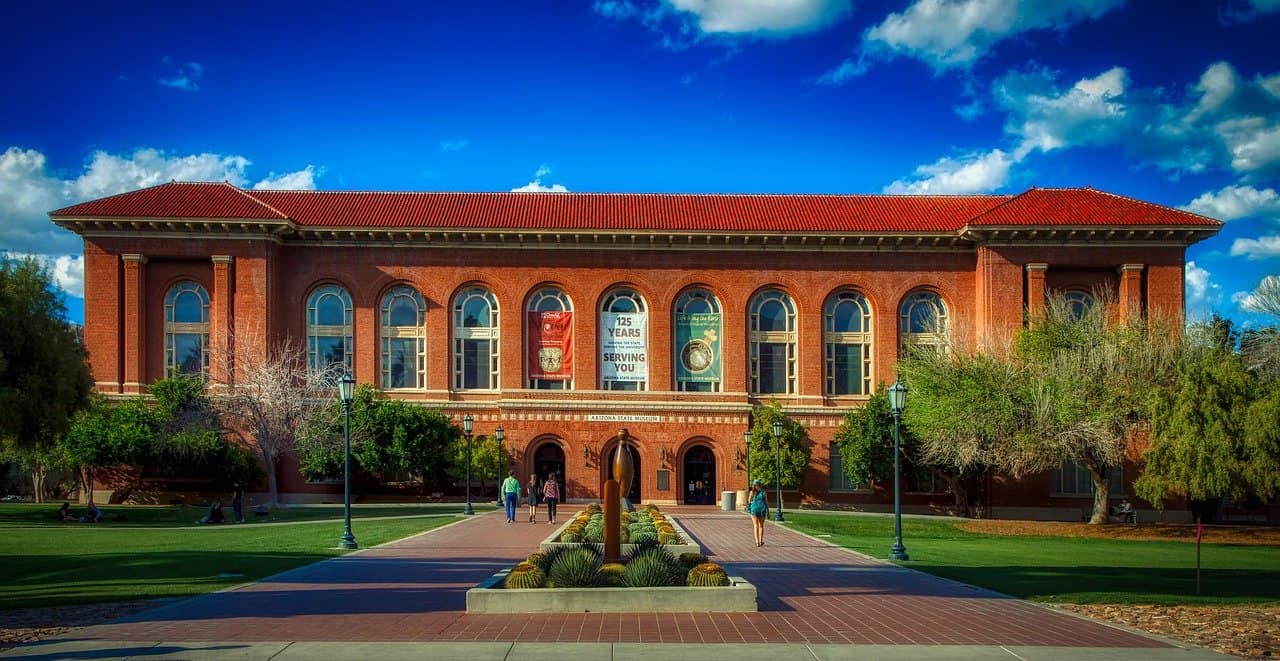
Arizona State Museum
Learn about Arizona’s 13,000-year human history in the oldest and largest anthropological research facility in the U.S. Established in 1893, the current collections include native baskets and fiber arts with over 35,000 total examples that date back 7,000, though not all baskets are on display. Its Southwest pottery collection includes 24,000 vessels dating back 2,000 years. In addition, the Arizona State Museum offers an extensive photography collection.
Located at 1013 E. University Blvd. on the University of Arizona. Open Tuesday to Saturday from 10 a.m. to 4 p.m. Adult admission (18+) is $8 and free for those 17 and younger.
Children’s Museum of Tucson
Within the historic Carnegie Library, kids can explore 17,000 square feet of exhibits with 10 outdoor installations. Ideal for kids 10 and younger, kids will discover through play science, careers, and the human body at the Children’s Museum of Tucson.
Located at 200 S. 6th Ave. Open Tuesday to Sunday from 9 a.m. to 5 p.m. General admission is $12 for everyone 1 and older. Babies enter for free. Enter for free on Thursday from 5 p.m. to 7 p.m. for Discovery Night.
Gaslight Theatre
See an original show in the old Jerry Lewis Theater with a line-up of musical comedies, westerns and sci-fi spoofs. It’s been a staple since the 1970s.
Located at 7010 E. Broadway Blvd., about 10 miles east of downtown Tucson. On Monday nights, the Gaslight Theatre features concerts starting at 6 p.m. Tuesday through Thursday, shows at 7 p.m.; on Friday and Saturday, shows begin at 6 and 8:30 p.m. with a 3 p.m. matinee on Sunday. Show tickets cost $27 for adults, $25 for seniors, students and military members, and $15 for children 12 and younger.
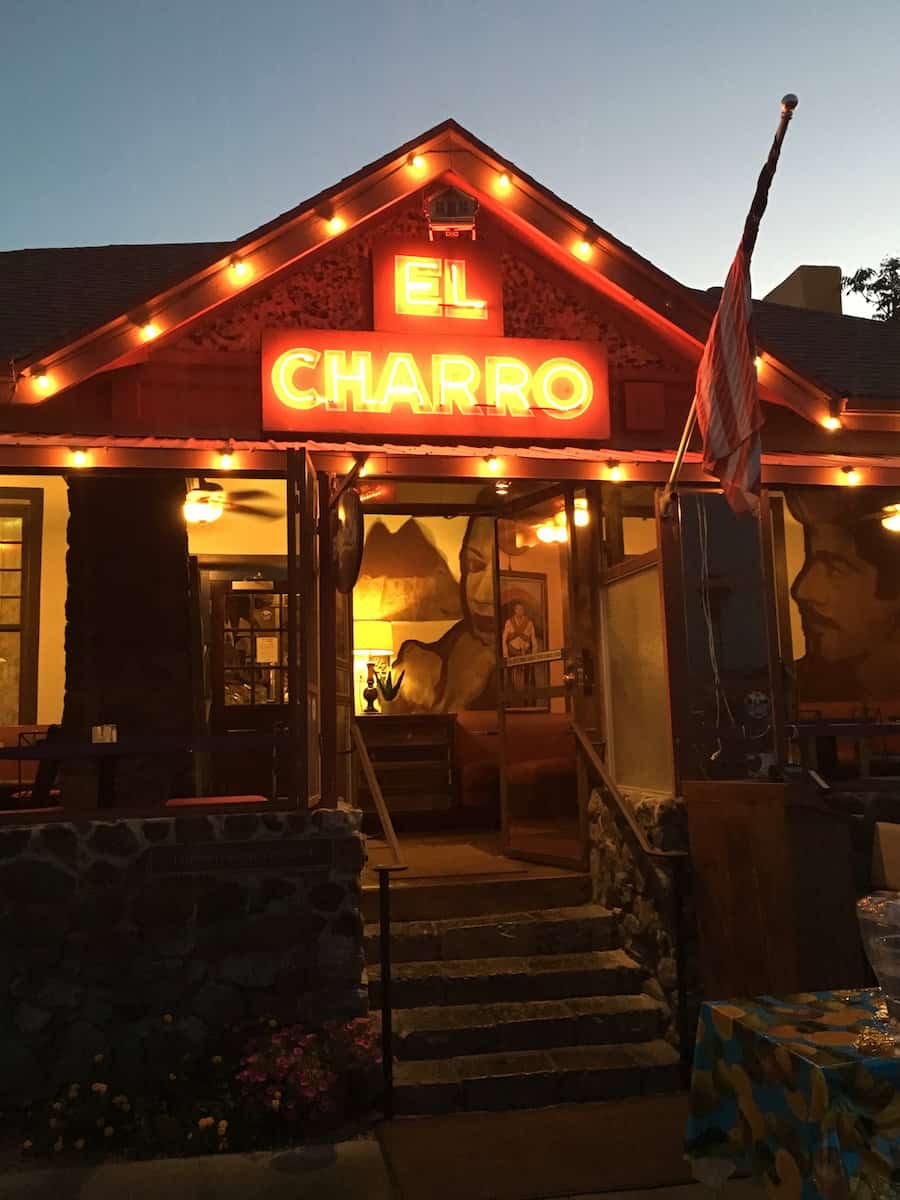
Where to Eat in Tucson
El Charro Café
Founded in 1922, it’s the oldest restaurant in Tucson. With its colorful dining area along with a Sonoran and Mexican menu, El Charro Café has long been a favorite with visitors and locals alike.
Located at 311 N. Court Ave. is the original location though find several across Tucson. Open daily from 11 a.m. to 8:30 p.m.
Near Tucson
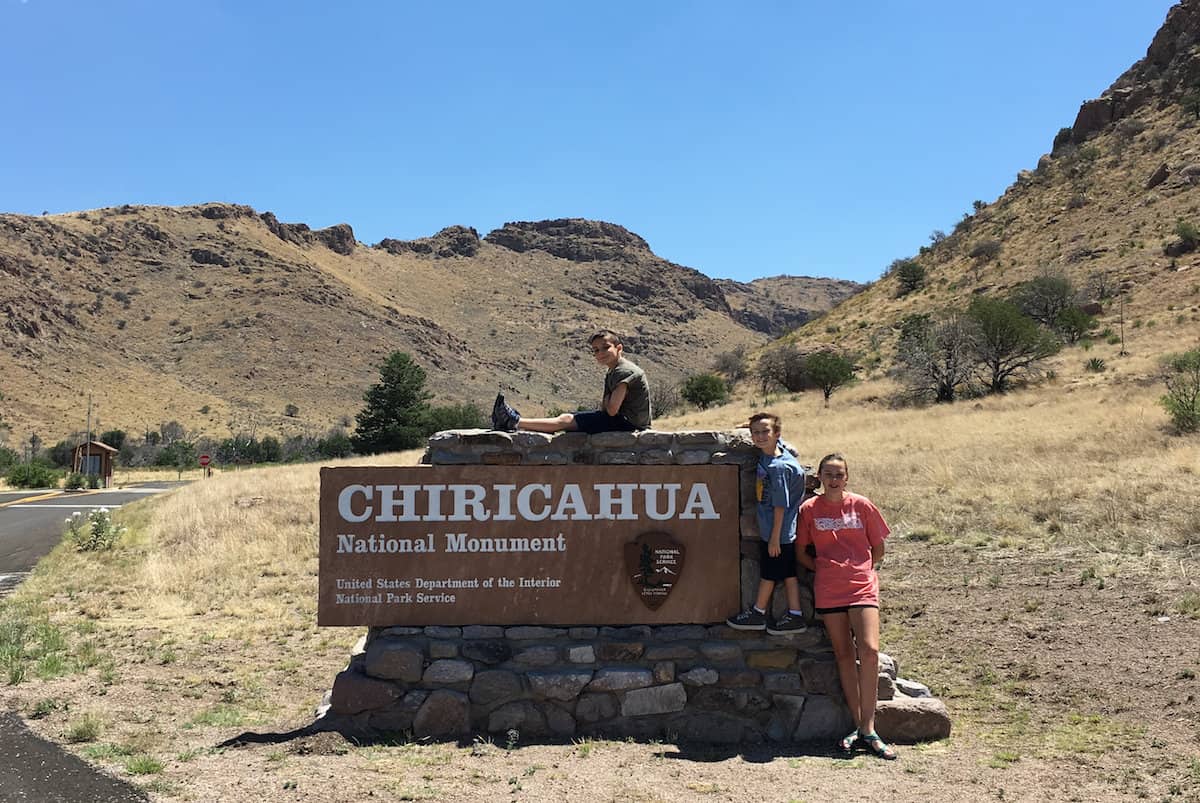
Chiricahua National Monument
The Chiricahua National Monument offers a perfect place to get out and explore. Just south of well-traveled Interstate 10, the Chiricahua mountains got its start with a volcanic eruption some 27 million years ago. As a national monument that visitors can explore in a few hours, the Chiricahua Mountains are nearly 10,000 feet tall. So high they touch the clouds and grab the sparse raindrops of the desert southwest.
To see the rock formations, take Bonita Canyon Drive, which starts at the western edge of the park boundary. The 8-mile route passes the Visitor Center, it climbs gently through an oak and pine forest to Massai Point. From there, visitors can see Rhyolite Canyon.
For visitors who hike during their visit, Chiricahua National Monument offers 17 miles of hiking trails. In addition, there’s a campground
Located at 2856 E. Rhyolite Creek Rd., about 120 miles east of Tucson, using Arizona Highway 186. Chiricahua National Monument is open 24 hours a day and 365 days a year and it is a free NPS site to enter.
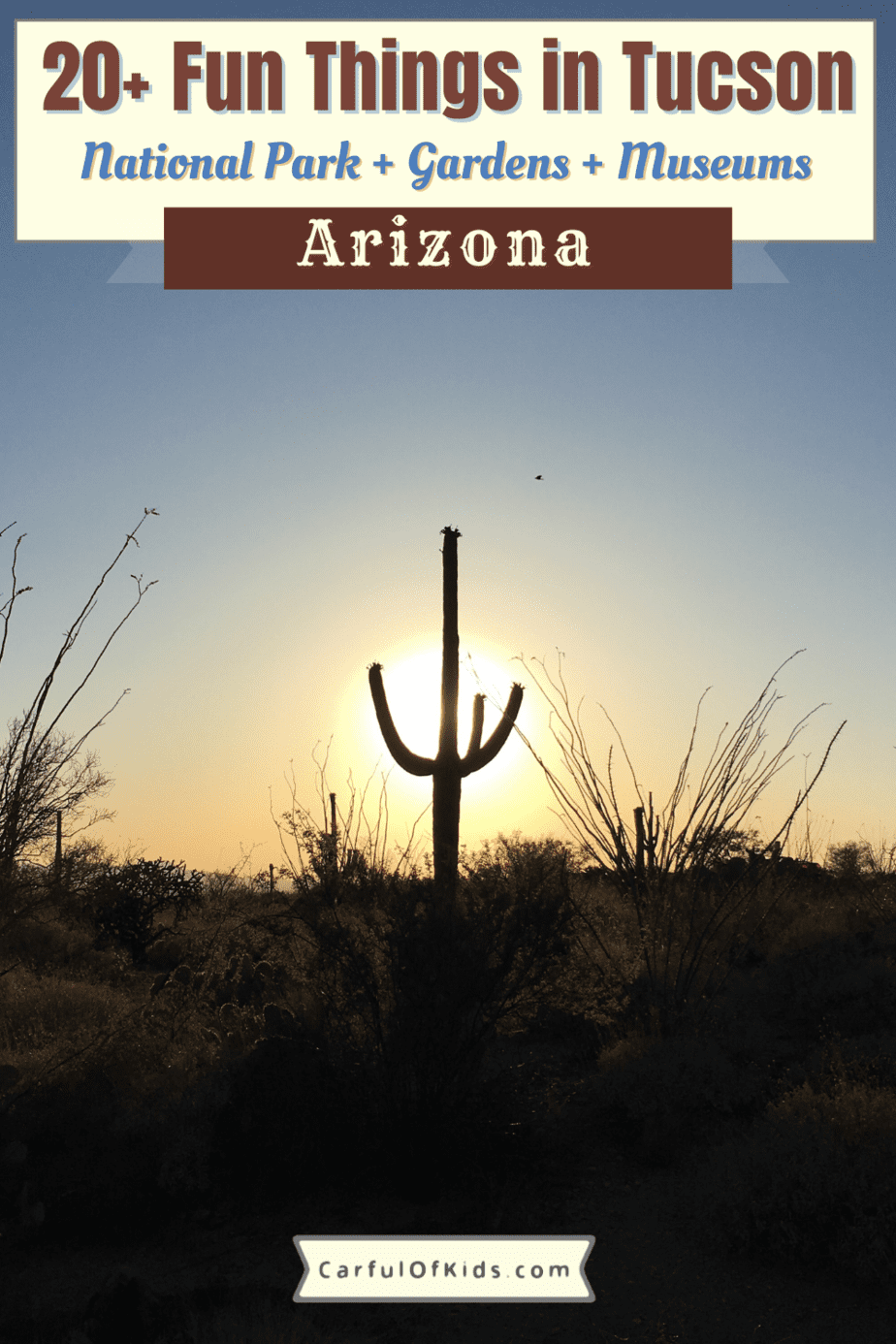


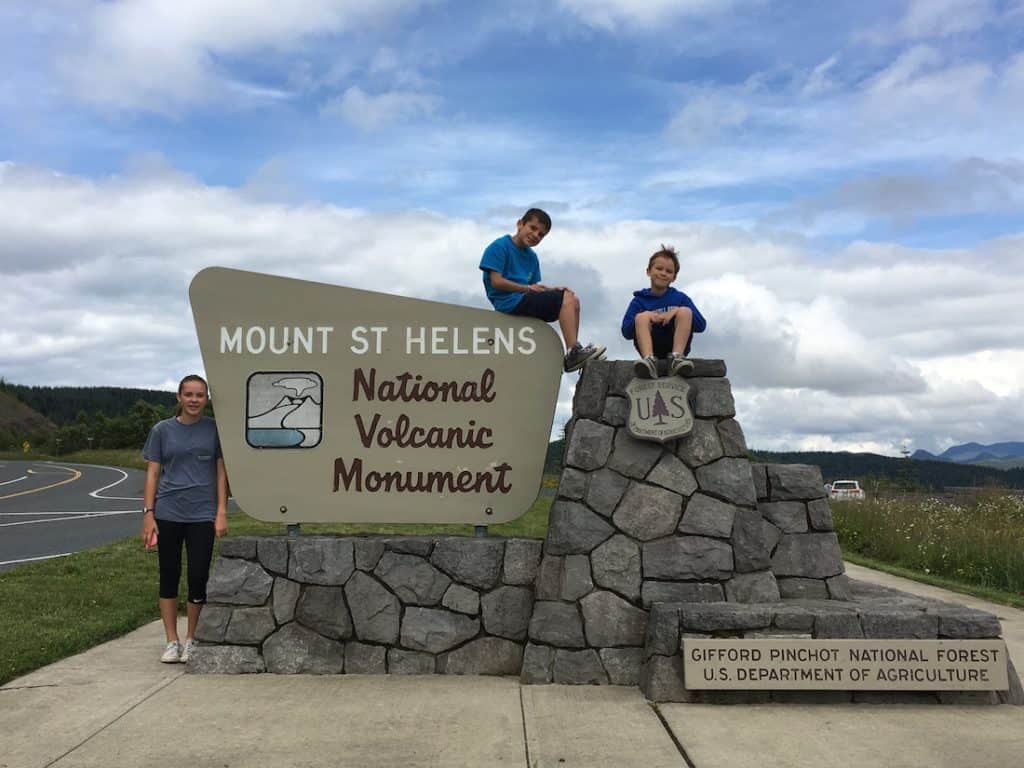
Comments are closed.